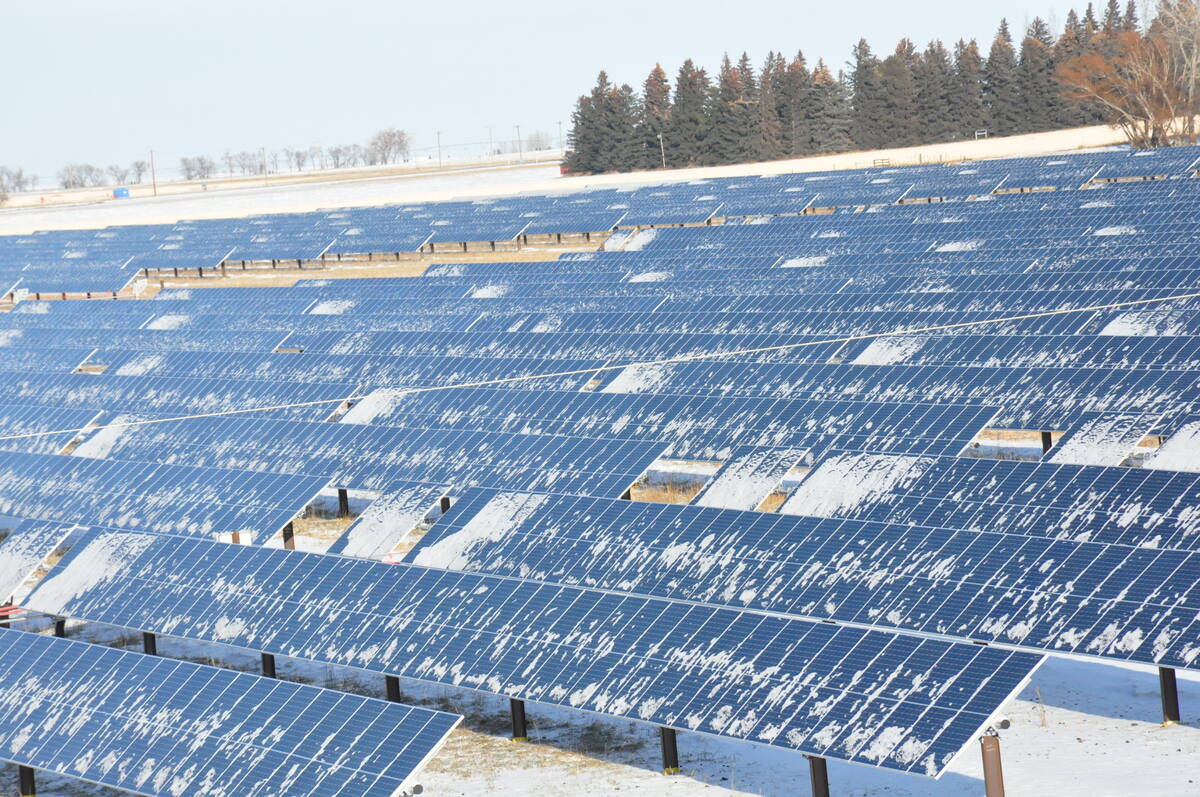The U.S. Department of Agriculture’s most recent World Agricultural Supply and Demand Estimates report confirmed that a freight train of grain is barreling toward 2023-24 markets, and farmers everywhere need to prepare for the rockier prices sure to follow.
The report was succinctly summarized by DTN market analysts shortly after its release May 12: “USDA projects farmers are in the midst of planting the country’s largest corn crop on record at 15.265 billion bu. (bb) and a record soybean crop at 4.51 bb …”
The two production records are a double-edged sword as they will lead to larger, price-flattening carryovers. Again, per DTN: The huge crops mean “2023-24 ‘new crop’ ending stocks for corn (are) projected at 2.22 bb and soybeans (are) pegged at 335 million bushels (mb).”
Read Also

Why agriculture is Canada’s energy ace
Why isn’t agriculture getting more play in Canada’s quest for efficient, renewable energy production? It should be
The corn carryover is 805 mb or 68 per cent higher than the 2022 carryover and the soybean carryover is 119 mb higher, or 55 per cent larger.
The projected corn crop will slap the coming year’s average price down to US$4.80 per bu., a profit-clipping $1.80 below this year. Likewise, this year’s likely record soybean crop means its projected average price will slide $2.10 per bu.
While $1.80 per bu. lower for corn and $2.10 per bu. lower for beans sounds modest, the declines, taken across record production for both crops, mean a chunky, multi-billion-dollar drop in gross U.S. corn income and a smaller, but still substantial, drop in soybean revenue.
And that’s if either or both projected record crops hit their forecasted targets. If good weather boosts either crop’s final production, carryover will climb even higher, average prices will fall, and farm income will slip even lower.
In the middle of all this good-news-is-really-bad-news data for U.S. corn and soybean farmers, American wheat farmers couldn’t tell if their section of the report was a pat on the back or a kick in the pants — a distance former USDA chief Earl Butz liked to remind audiences, “is only 18 inches apart.”
The headline to the wheat forecast, Bloomberg blared, was that “America’s wheat fields have become so plagued by drought that farmers are now poised to abandon crops at the highest rate in more than a century.”
So, the shorter U.S. crop means taller U.S. prices, right?
Bloomberg said that’s a rock-solid maybe. Acreage abandonment “to lower levels than analysts were expecting … could keep domestic prices elevated, even with rival producers such as Canada and Argentina likely to boost output.”
USDA’s wheat price projection, however, did not agree. Indeed, government forecasts didn’t say “could” at all. Instead, drought or no drought, the report pegged 2023-24 wheat prices at $8 per bu., 85 cents lower than last year’s average price.
Which just goes to show the world why America’s farmers continue their more-than-a-generation-long love-hate relationship with wheat: they just can’t catch a break with it.
For example, strong 2022 prices, buoyed by lower U.S. acres and war in Ukraine, encouraged hesitant U.S. growers to sow 10 per cent more wheat this marketing year. Last summer’s drought, however, continued into winter and into spring to deliver record acreage abandonment, normally a booster rocket for prices.
But no, Chicago July wheat futures continue their sleepy, slow slide. On Dec. 30, July futures closed at $8.03. By mid-May, the July contract had slipped below $6.50 per bu. and now has the grease to slide more.
Given 2023’s soaring-production-sinking-price forecast, maybe Butz had it right on the slim margin between praise-worthy and pain.
The Farm and Food File is published weekly throughout the U.S. and Canada. Past columns, supporting documents, and contact information are posted at farmandfoodfile.com.















